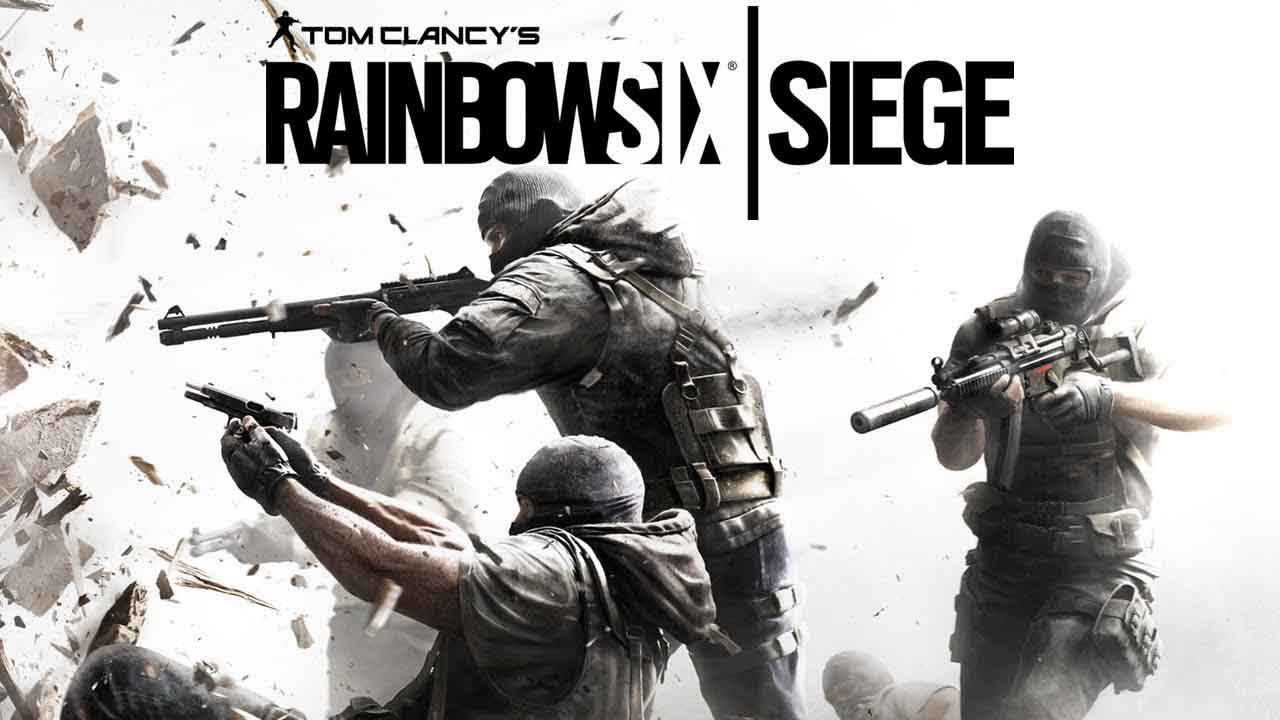
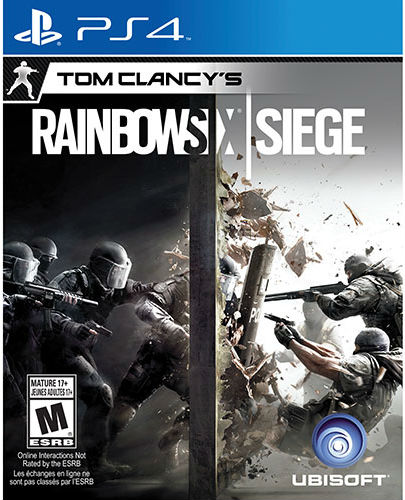 A new Tom Clancy game for a new generation of game consoles
A new Tom Clancy game for a new generation of game consoles
Unveiled to the world at E3 2014, Tom Clancy’s Rainbow Six Siege is the first entry in Ubisoft’s long-running tactical first-person shooter series to grace the latest generation of gaming consoles, and the first since the renowned author of military thrillers tragically passed away in 2013. This latest iteration in the Rainbow Six franchise continues its longstanding history of team-based tactical combat, but places a much greater emphases on multiplayer and adds highly destructible environments. After taking part in the multiplayer beta this past September, I’ve now spent dozens of hours playing the final retail build to put this game through its paces. My conclusion: if you’re a fan of first-person tactical shooters, this is the game you’ve been waiting for. Let’s take a look at why.
Game Details
Platform: PlayStation 4, Xbox One, PC
Developer: Ubisoft Montreal
Publisher: Ubisoft
Genre: First-person shooter, Tactical shooter
Modes: Single-player, Multiplayer
ESRB Rating: M (Mature 17+)
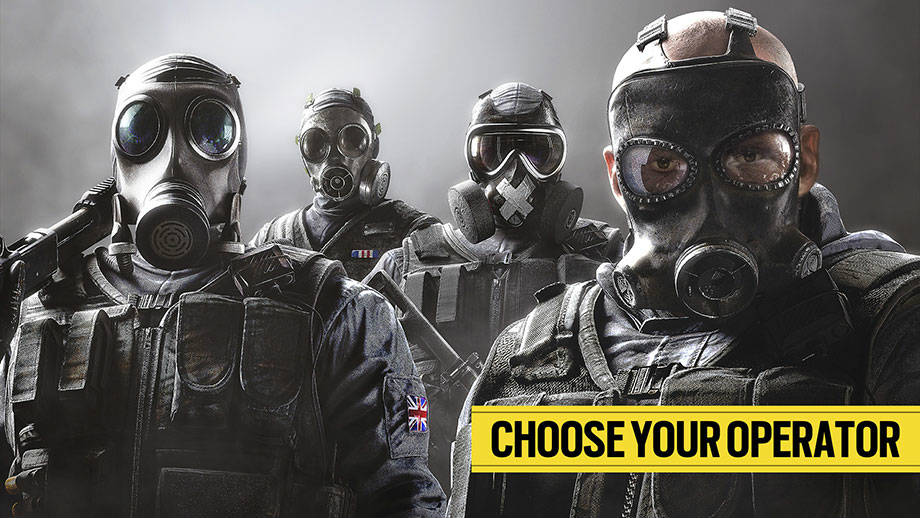 Choose from among elite operators
Choose from among elite operators
Rainbow Six games have always focused heavily on realistic combat, but Siege ratchets up this aspect one notch further with its inclusion of real-world counter-terrorist special forces from around the world. Your first task in the game is perhaps the most difficult—choosing an operator from one of five different factions: SAS (British), FBI SWAT (American), GIGN (French), Spetsnaz (Russian), or GSG 9 (German). Each special forces unit has four different operators to choose from, two that specialize in advanced tactical offense, and two that are elite defense experts. In total, there are 20 different operators to choose from, each possessing their own special abilities, loadouts, stats, and perks.
The range and depth of operators in Rainbow Six Siege is nothing short of impressive. My first pick was an SAS defender named Smoke who wears a protective gas mask and can deploy a remote detonated mine filled with toxic gas. As I quickly learned, Smoke is best utilized as a support operator to confuse and disorient opponents, or block chokepoints, while your squadmates circle around and eliminate your targets. In order to achieve such an efficient level of team coordination, tactical planning and ongoing communication in Siege is critical, even more than it was in past highly tactical Rainbow Six games like Ghost Recon Advanced Warfighter or Vegas 2.
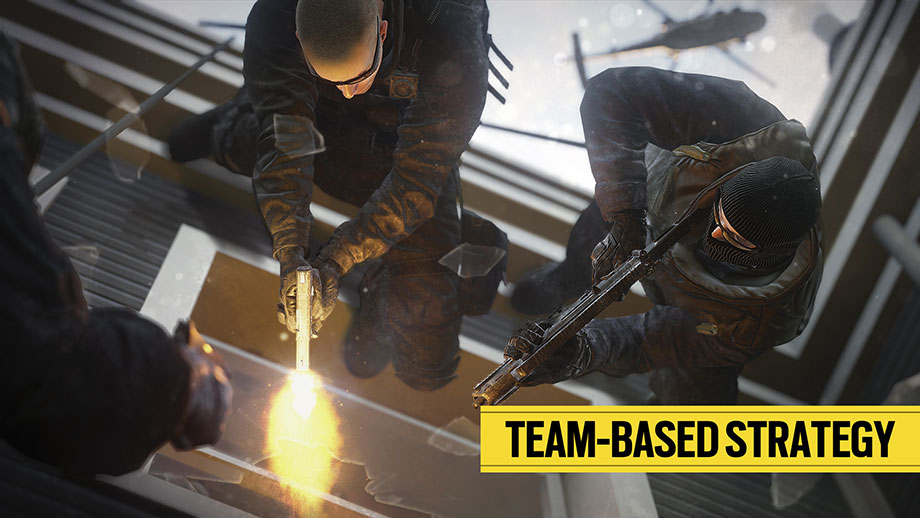 Get to know your operators
Get to know your operators
Exploring the full roster of operators in Siege will take some effort as each is unlocked by cashing in “Renown” points, which are acquired through continuous gameplay. That’s why choosing your operators is so important—once you’ve selected one it’ll take some game time before you access a new one. At first I was disappointed that I couldn’t select any operator I wanted in a given match, however it really turned out to be a blessing in disguise. This is because each operator is so specialized and nuanced, you’ll want to take the time to learn their strengths and weaknesses inside and out. Even if you decide you don’t like an operator, your opponents are very likely to select them in an upcoming match, so knowing their full capabilities can give you a real combat advantage.
Now that I’ve had a chance to play with most operators, it’s really hard to choose a favourite since each has the advantage in particular situations. For example, the Spetsnaz attacker Glaz is an expert marksman that can flip his magnifier scope to turn his Dragunov into a deadly long-range riffle, highly useful for maps like Kanal that feature multiple buildings well-positioned for distance sniping. When you’re on defense, characters like the Castle (SWAT) and Doc (GIGN) can be invaluable, given their abilities to reinforce rooms with armour panels or use a stim gun to remotely revive teammates, respectively. Not since Payday 2 have I had this much enjoyment exploring different character classes in a team-based shooter.
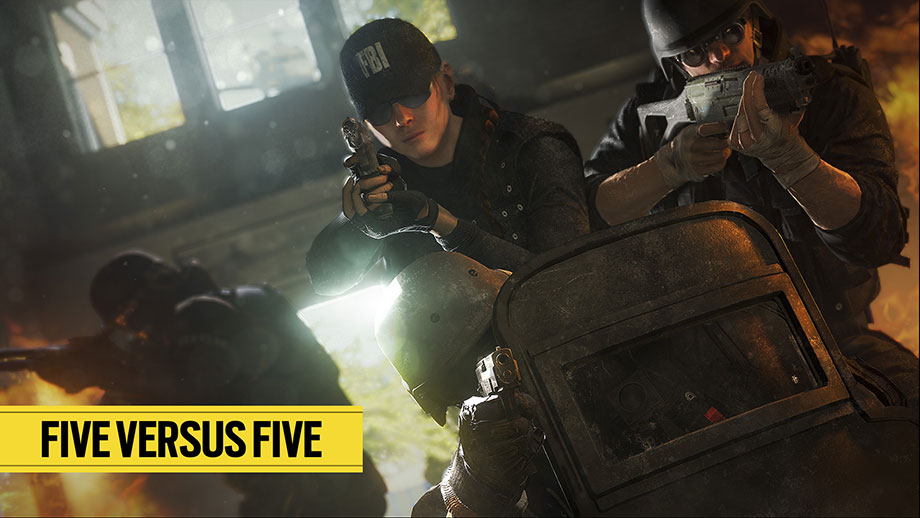 Execute a coordinated siege
Execute a coordinated siege
Gameplay in Rainbow Six Siege takes the form of 5v5 rounds, each lasting about three minutes. Objectives will change each round, ranging from a hostage rescue, to disarming a bomb, to securing a biohazard container, and you’ll take turns playing the role of attacker and defender. Pre-planning for matches is crucial, since only one person can play as each individual operator, and you’ll want to ensure your balanced squad has good synergies. It’s this tactical aspect of Siege that makes the game so interesting.
Matches begin with defenders fortifying their strongholds, while at the same time attackers send out small remote-controlled drones to perform reconnaissance and intelligence gathering, primarily to locate the mission’s target. During this phase the defenders can deploy multiple different types of defenses, ranging from barb wire to slow down enemy movement, to barricading doorways or windows, to unleashing specialized gadgets such as Jäger’s wall-mountable active grenade defense. Once the infiltration begins, as attackers you have tons of strategic approaches at your disposal, including rappelling buildings and swinging in through windows, planting breach charges to destroy floors for surprise drop-in attacks, or simply storming in main entrances with handheld shields deployed and guns blazing. There are practically endless ways to approach each mission, or “situation” as the game likes to refer to them, so no two games are ever alike.
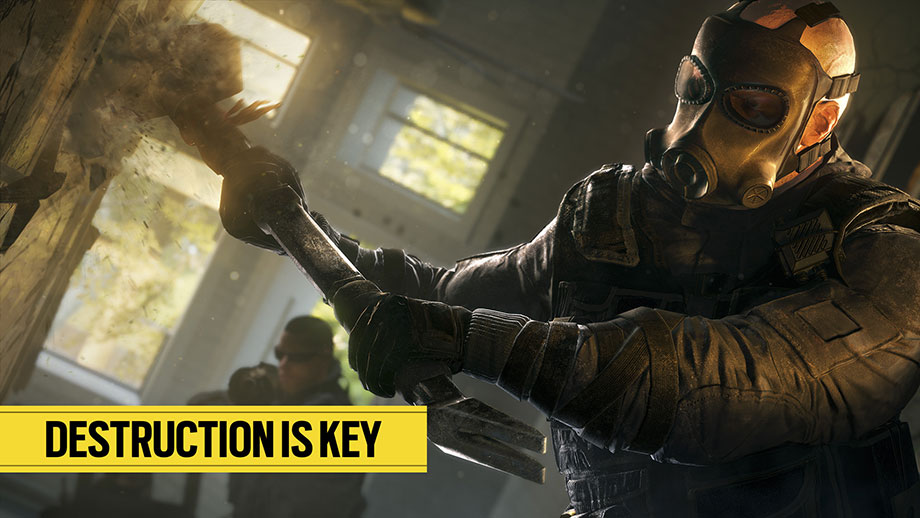 Cause destruction
Cause destruction
One of the most impressive elements of Rainbow Six Siege is its procedural destruction system that is highly realistic and reacts dynamically to the gameplay. Using breach charges or other explosives, you can blow up entire walls or bust through floors and ceilings to take enemies by surprise. For a quieter, stealthier approach, firing a few silenced bullets to create holes can give you early line of sight on the enemy. For every action you take, the game will realistically and dynamically react, depending on the size and caliber of your bullets, or the explosive power of bombs you set. Knowing your immediate surroundings at all time, particularly how penetrable each surface is, can mean the difference between life and death in this game. From my experience, the best players are those who continuously use the environment to their advantage.
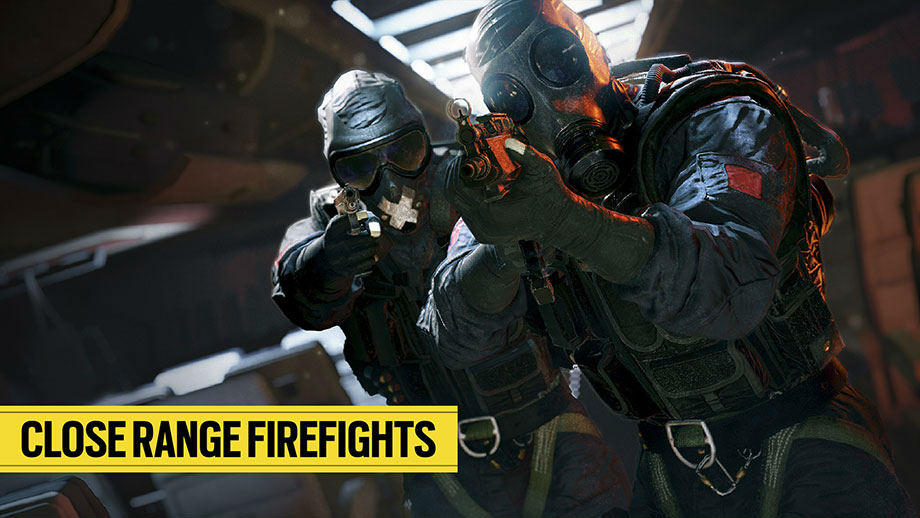 Playing solo
Playing solo
When you want to take a break from competitive multiplayer, Rainbow Six Siege also offers two modes that can be played solo: Situations and Terrorist Hunt. I recommend starting with Situations, as in this mode you’ll run through 11 missions to learn gameplay basics including close quarters combat and how to properly defend strongholds. You’ll also get a lot of Renown points by completing missions, and certain bonus objectives, helping you to unlock more operators. Terrorist Hunt, on the other hand, pits you against A.I. opponents either as a lone wolf, or with up to four other players. The three different difficulty levels—Normal, Hard, and Realistic—lets you fine-tune the difficulty based on your skill level or desired challenge. While I spent the most time playing the standard versus multiplayer, these additional modes give you perfect spots to hone your skills or change-up the gameplay.
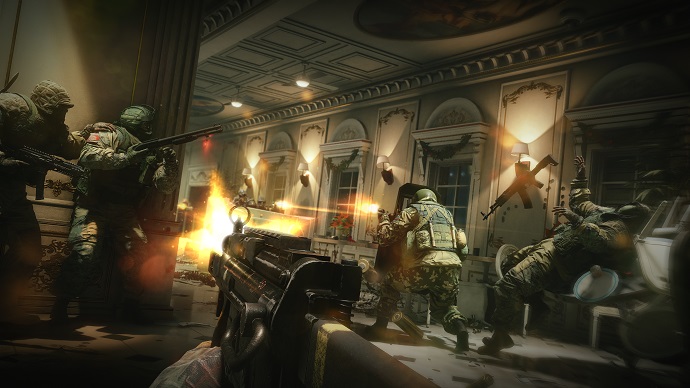 Online connection issues
Online connection issues
One fault that still plagues the game to this day are server problems resulting in lost connections or dropped games. Usually at least once an hour this happens during my online time, typically booting me back to the main screen, or in some cases forcing me to reset the software. It’s really too bad considering the gameplay itself is quite excellent, and multiplayer matches that work are extremely fun. These unfortunate technical hiccups undermine an otherwise exceptional tactical first-person shooter. When the online component is running smoothly, Rainbow Six Siege is truly a blast to play.
Final thoughts
Tom Clancy’s Rainbow Six: Siege is extremely fun to play as a team, especially online with friends. The diverse range of operators to choose from is impressive, and even after dozens of hours of game time I’m still learning new ways to utilize each character under a range of conditions. With so many attack and defend options at your disposal, combined with a constantly shifting battlefield (thanks to an excellent dynamic destruction system), this is one of the most tactical team-based shooters ever. However, all this great action can be undermined by problematic servers and recurring error connections. With that said, when the servers are running smoothly, this is one fine tactical shooter experience.
+ Nice selection of operators with diverse skills and weapons
+ Tight controls
+ Huge emphasis on team-based tactical gameplay
+ Realistic destructible environments
+ Sharp A.I.
– Content is somewhat limited
– Recurring connection issues
OVERALL
Gameplay: 4/5
Graphics: 4.5/5
Sound: 4.5/5
Lasting Appeal/Replayability: 3.5/5
Overall Rating 4.1/5 (82%)
Get Rainbow Six: Siege for PlayStation 4
Get Rainbow Six: Siege for Xbox One

By Paul Hunter, Editor Gaming
I work out of Toronto, Ontario as the Editor of Gaming here on the Plug-in Blog and as Editor-in-Chief of NextGen Player. I am thankful for having a loving and patient wife who doesn’t mind my 40 hour a week obsession with gaming. You can follow me on Twitter @NextGenPlayer and on my exclusive Vine gaming channel. Come join the conversation!



